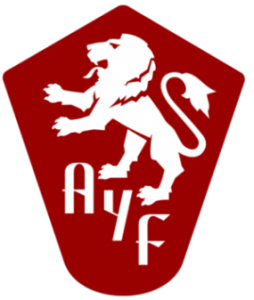The Marvels of Artsakh
BY DANIEL OHANIAN
I’ve heard that many people who visit Armenia don’t usually get the chance to visit Artsakh. Thankfully, the Youth Corps program was able to secure this opportunity for us.
 What more logical way to introduce our journey than to address the road we took? In addition to being a physical link between two sections of Miatsyal Hayastan, the drive along the Goris-Stepanagerd Highway has an important ideological significance.
What more logical way to introduce our journey than to address the road we took? In addition to being a physical link between two sections of Miatsyal Hayastan, the drive along the Goris-Stepanagerd Highway has an important ideological significance.
Funding for this $10 million roadway – along with the $28.5 million North-South Highway which forms NKR’s backbone – was secured by the All-Armenia Fund; both are unbelievably strong testaments to the Diaspora’s commitment to the homeland and to safeguarding the return of its territories. The more of this beautiful country we see, the clearer the link between Diaspora and motherland or Armenia and Artsakh becomes.
On our way to Shoushi, the Nagorno Karabakh Republic’s second-largest city, we stopped by the ruined ghost town of Aghdam. The video below will give you an idea of what the crumbling buildings that made up the grim landscape looked like.
Contrasting the bleakness at Aghdam were the city and museum at Tigranakert. One of seven capitals built in the emperor Tigran the Great’s name, Artsakh’s Tigranakert is a city standing, in a sense, on the knife’s edge between life and death. It was resurrected through excavations that began in 2005, and now boasts a very modern and attractive museum.
Built in the 13th century, the walled abbey at Gandsasar is an architectural marvel with strong resemblances to another wonder of Armenian church architecture – Aghtamar’s Sourp Khatch (Holy Cross) cathedral. It is said that the Sourp Hovhannes Mgrditch (St. John the Baptist) Cathedral located within Gandsasar ‘s walls is the final resting place of a key Christian relic: the head of St. John the Baptist.
During our trip, Shoushi became our base of operations in Artsakh and the Shoushi Hotel our home. The view from our room was spectacular, as we awoke every morning with Ghazanchetsots Church greeting us. One night, after an especially djokh dinner in the hotel’s dining room, the staff apologisingly asked us to call it a night as our celebrations were bothering the other guests. What was our solution? To congregate on the streets of this former capital for a 2am heghapokhagan song session.
Stepanakert is the current capital of the Nagorno Karabakh Republic. While there, we put aside the day to focus on one thing: the Karabakh liberation movement. After visiting our ungers at the local ARF office, we moved on to the Azadamardig (Freedom Fighter) Museum. Owner Galia Adamanian gave an extraordinarily moving account of the war’s human toll, as well as of the importance of safeguarding freedom even at the cost of one’s life. This last lesson wasn’t one we could allow ourselves to take lightly, however, as Mrs Adamanian was speaking from experience: her son had given his life for Artsakh 20 years previously and she had established this museum in his honour and all those who had sacrificed so much for their nation.
We wrapped up our stay in Stepanakert with a very generous dinner hosted by the city’s AYF chapter. Preceded by a game of mafia and ending with a cup of tea; the experience was truly amazing. We sat in the centre’s courtyard under a cool night sky enjoying the mounds of khorovadz and ever-flowing stream of tti oghi (mulberry vodka).







Leave a Reply
Want to join the discussion?Feel free to contribute!